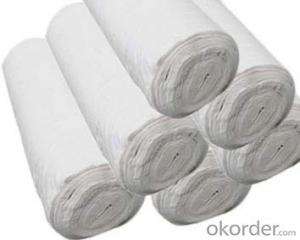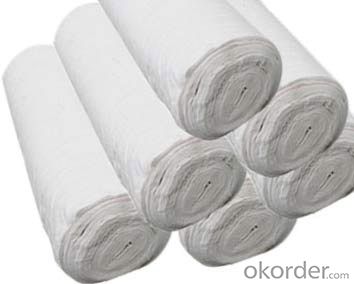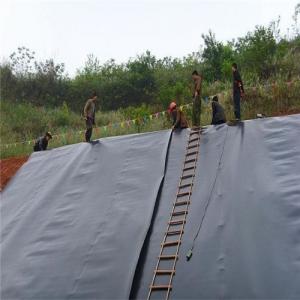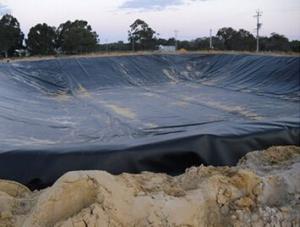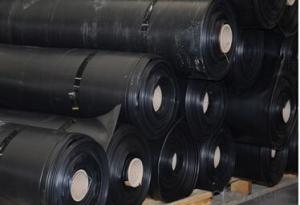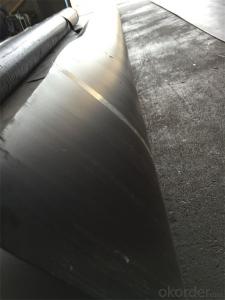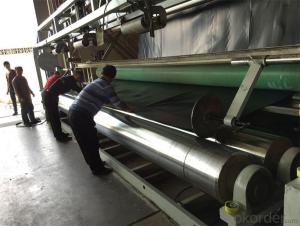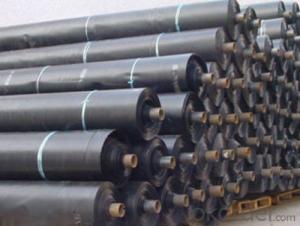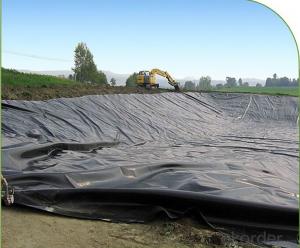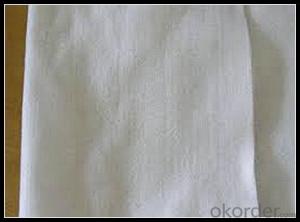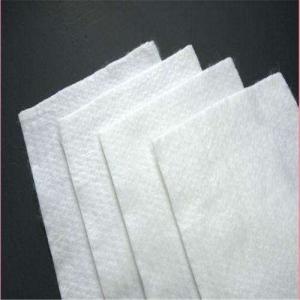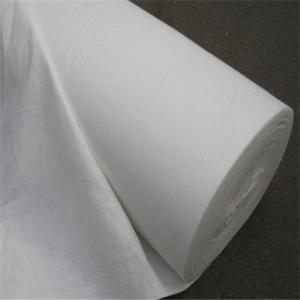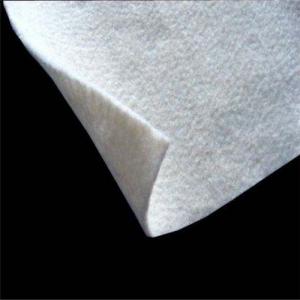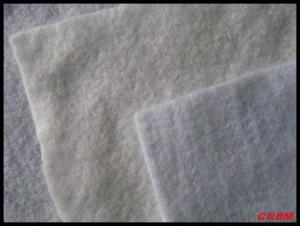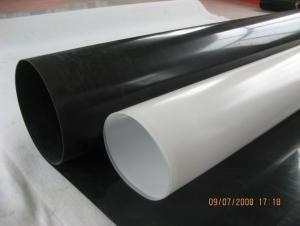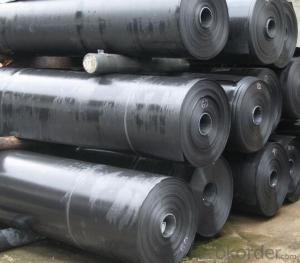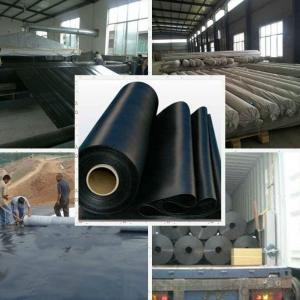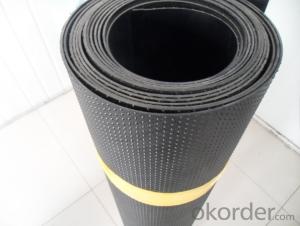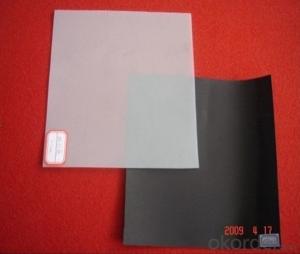Impermeable Geomembrane Polyester Nonwoven Geotextile for Road Construction
- Loading Port:
- Qingdao
- Payment Terms:
- TT OR LC
- Min Order Qty:
- 10000 m²
- Supply Capability:
- 500000 m²/month
OKorder Service Pledge
OKorder Financial Service
You Might Also Like
Structure of Polyester Nonwoven Geotextile Description:
Polyester Short fiber needle nonwoven geotextile is a new type of construction materials which is defined to use in construction projects. The main roles of geotextile include filter, water treatment materials and georeinforce. Materials. Needled staple fiber geotextiles show excellent filtration effciency, isolation, reinforced protective effect, high tensile strength, good permeability, high temperature resisting, anti-freezing, anti-aging, corrosion resistance.
Main Features of Polyester Nonwoven Geotextile:
1.Separation
The isolation of the railway dregs and the roadbed, roadbed and the soft base, surface of the airdrome and parking lot and the groundsill, different dam materials. It isolates the soil and the gravel of two kinds different
granule pathway from the groundsill or other buildings.
2.Reinforcement
The highway, railway, soil-stone dam, breakwater, airport, backfill soil of retaining wall, slope protection, etc in which distributes the earth stress, prevents the side-displacement of the earth body and improves the earthbody stability.
3.Protection
It prevents the bank from being washed out, protects the bank and the
bottom, prevents the water and soil from being washed away
Polyester Nonwoven Geotextile Images
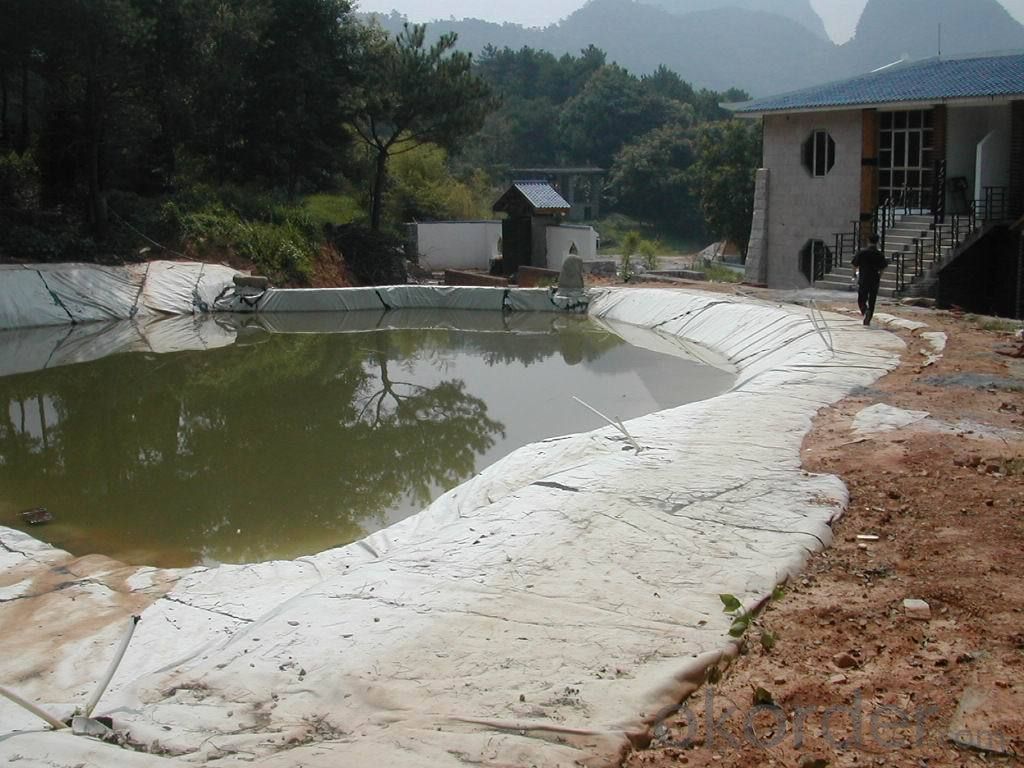
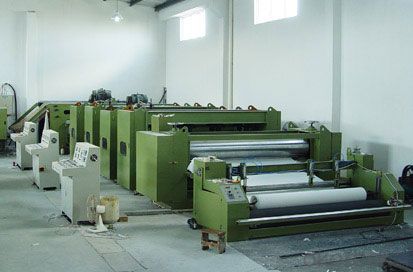
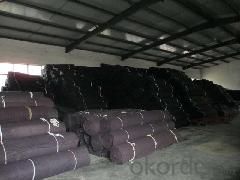
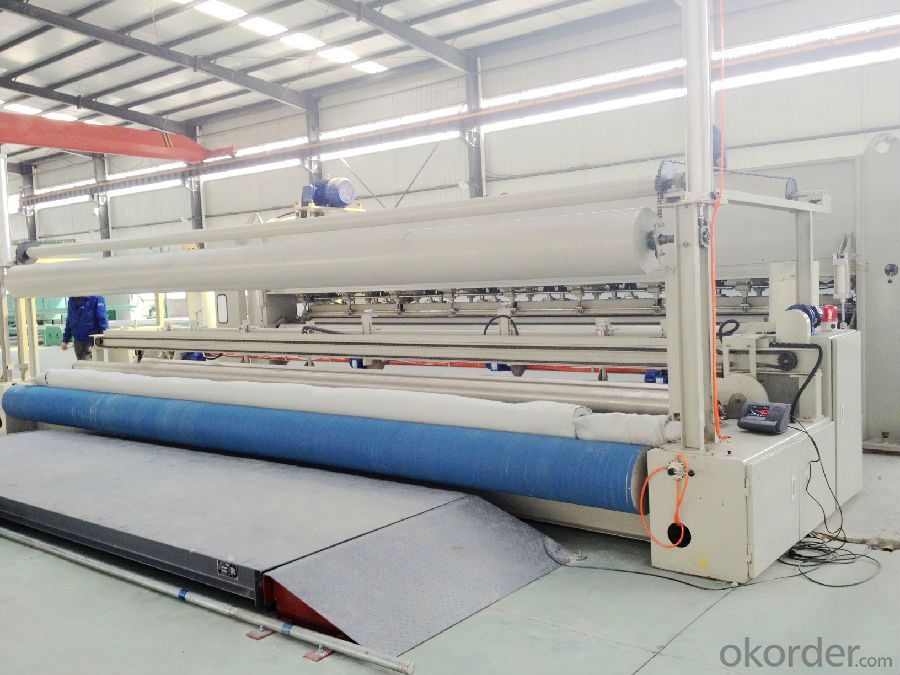
Polyester Nonwoven Geotextile Specification:
No | Project | Index | ||||||
1 | Breakage Strength KN/m≥(MD) | 20 | 30 | 40 | 50 | 60 | 80 | 100 |
2 | Breakage Strength KN/m≥(CD) | 15 | 22 | 28 | 35 | 42 | 56 | 70 |
3 | Elongation Rate (MD,CD) ≤ | 28 | ||||||
4 | Trapezoidal Tearing Strength | 0.3 | 0.45 | 0.5 | 0.6 | 0.75 | 1.0 | 1.2 |
5 | Burst Strength KN≥ | 1.6 | 2.4 | 3.2 | 4.0 | 4.8 | 6.0 | 7.5 |
6 | Vertical Permeability Coefficient cm/s | 10-1~10-3 | ||||||
7 | Sieve size(O95) mm | 0.08~0.5 | ||||||
8 | Unit weight g/m2 | 120 | 160 | 200 | 240 | 280 | 340 | 400 |
9 | Thickness mm | 0.40 | 0.48 | 0.60 | 0.70 | 0.80 | 1.00 | 1.25 |
10 | Variation % | ±10 | ||||||
FAQ
We have organized several common questions for our clients,may help you sincerely:
Q1: How about your company?
A1:Our company are one of the largest geosynthetic products supplier in the world.We have the products experience more than 20 years.Already export to USA/Germeny/Australia/Zambia/Brazil etc.more than 20 countries.Almost 10years.Our products including Geocell/Fiberglass Geogrid/Geomembrane/Geotextile/Geonet etc.
Q2:Can you send samples to us ?
A2:Yes , free samples could be provided , but customer need pay for the freight cost .
After order placed , the freight charge could be refund .
Q3:What’s your Payment term ?
A3:T/T , L/C , Western Union,Paypal ...
Q4:What’s your manufacture process time ?
A4:Usually within 20 days
- Q: How much does the electrothermal?film cost?
- Electrothermal film heating costs is electric charge. the power of a square meter is generally about 110W-130W. No matter what temperature you want to set, as long as it is working, the cost is 130W/N hours/square meter. A kilowatt hour, you can calculate on your own. National standard energy-saving is 65%, the heating watt per square meter is 50 to 70 W, 110 to 130W is the standard before 2005.
- Q: What are the considerations for geomembrane installations in high-wind areas?
- When installing geomembranes in high-wind areas, several considerations need to be taken into account. Firstly, the selection of a suitable geomembrane material with a high tensile strength and resistance to tearing is crucial. The installation techniques should also be tailored to withstand strong winds, which may involve using additional anchoring methods, such as ballasting or mechanical fastening, to ensure the geomembrane remains securely in place. Furthermore, the design of the geomembrane system should consider wind load calculations, taking into consideration factors such as wind direction, duration, and gustiness. Regular inspections and maintenance should be conducted to identify and address any potential wind-related damage or stress on the geomembrane. Overall, a comprehensive understanding of the site-specific wind conditions and the appropriate design and installation measures are essential for a successful geomembrane installation in high-wind areas.
- Q: Can geomembranes be used in floating covers for liquid storage tanks?
- Yes, geomembranes can be used in floating covers for liquid storage tanks. Geomembranes are impermeable and flexible liners that are commonly used for containment and protection of liquids. Their excellent resistance to chemicals, UV radiation, and weather conditions make them suitable for floating covers in liquid storage tanks, ensuring the containment and preservation of the stored liquids.
- Q: How to pave the electrothermal?film?
- Attention should be paid to several aspects when paving ceramics on electrothermal?films: first, is waterproof insulation should deal be well prepared; second, the concrete used to pave ceramics should not be too thick. The thickness should be controlled within 50mm (the thickness of concrete and ceramics
- Q: Can compsite geomembrane produced by multilayer coextrusion technology? can geomembrane be directly applied to the actual work without being composited with non woven cloth?
- Its principle is to heat geomembrane and then press them with the non woven cloth. many ditches and aquatic farms anti seepage uses geomembrane. they can be composited after cooling. non-woven composite geomembrane can not composite with non woven cloth. composite geo-membrane is produced by thermal compounding.
- Q: composite geo-membrane's introduction
- composite geo-membrane, it's widely used in canal seepage control project. In recent years, a large number of applications and their effectiveness of geosynthetics in civil engineering, in particular flood rescue project, attracts high attention of engineering and technical staff. For geosynthetics technology, from anti-seepage, filtration, drainage, reinforcement, protection and other aspects, our nation has proposed normative technical requirements, which has greatly accelerated the pace of the popularization and application of new materials. The material is widely used in the irrigation channel anti-seepage project, combined with the construction practice, we will talk about the application technology of geomembrane.
- Q: How do geomembranes contribute to wetland restoration projects?
- Geomembranes can contribute to wetland restoration projects by providing a reliable and effective barrier for preventing the infiltration of contaminants and excessive water seepage. By lining the wetland areas with geomembranes, we can create a controlled environment that aids in maintaining the proper water levels and quality necessary for the successful restoration of wetland ecosystems. Additionally, geomembranes help to minimize erosion and maintain the integrity of the wetland habitat, ultimately facilitating the growth and sustainability of wetland vegetation and wildlife populations.
- Q: What are the limitations of geomembranes in high-chemical concentration environments?
- The limitations of geomembranes in high-chemical concentration environments include potential chemical degradation, reduced lifespan, and potential failure due to chemical attack or permeation. Additionally, geomembranes may have limited resistance to certain chemicals, requiring careful selection and testing to ensure compatibility.
- Q: Can geomembranes be used in golf course pond and lake liners?
- Yes, geomembranes can be used in golf course pond and lake liners. Geomembranes are impermeable liners made of materials like high-density polyethylene (HDPE) or polyvinyl chloride (PVC), which are commonly used to prevent water seepage in various applications, including golf course ponds and lakes. These liners are durable, flexible, and resistant to UV rays and chemicals, making them suitable for creating watertight barriers in these water bodies.
- Q: Can geomembranes be used in stormwater management systems?
- Yes, geomembranes can be used in stormwater management systems. They are often used as liners or covers in stormwater ponds, detention basins, and other detention structures. Geomembranes help to prevent the infiltration of stormwater into the ground, reducing the risk of contamination and protecting groundwater. They also help to control the flow of stormwater, allowing for proper storage and gradual release. Overall, the use of geomembranes in stormwater management systems can improve water quality and reduce the risk of flooding.
Send your message to us
Impermeable Geomembrane Polyester Nonwoven Geotextile for Road Construction
- Loading Port:
- Qingdao
- Payment Terms:
- TT OR LC
- Min Order Qty:
- 10000 m²
- Supply Capability:
- 500000 m²/month
OKorder Service Pledge
OKorder Financial Service
Similar products
Hot products
Hot Searches
Related keywords
